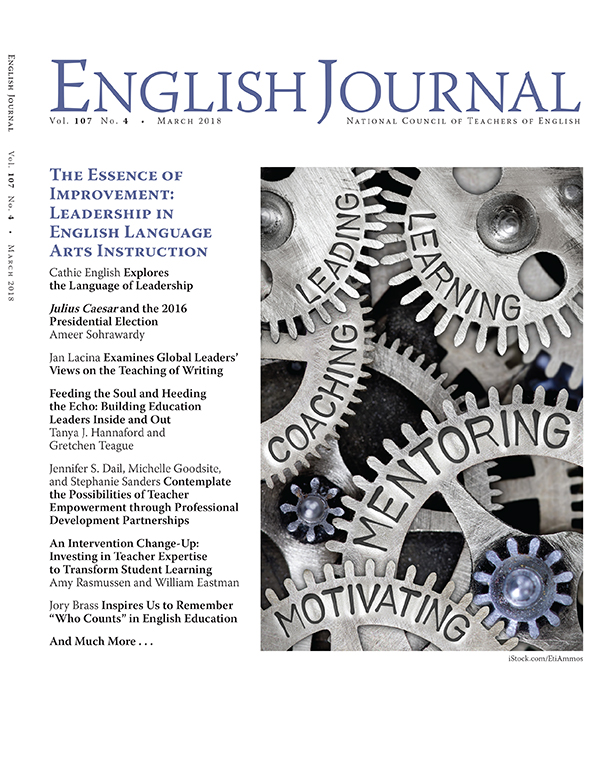David Gorlewski and Julie Gorlewski are the editors of English Journal.
To lead people is to walk beside them. As for the best leaders, the people do not notice their existence. When the best leader’s work is done, the people say, “We did it ourselves!”
—Lao Tsu, Chinese Philosopher
Over the years, we have worked with hundreds of school leaders from more than 20 different school organizations representing preK institutions through university doctoral programs. If there is a lesson that can be drawn from these experiences, it is this: Leadership matters. It is with this lesson in mind that we decided to devote an issue of English Journal to that topic.
Our Call for Manuscripts came under the title, “The Essence of Improvement: Leadership in Language Arts Instruction.”
The word essence speaks to the importance of acknowledging that any attempt at change must be done by viewing an organization systemically. School leaders must approach the concept of change from a wide range of perspectives and develop an understanding of the phenomenology of change, that is, how stakeholders in the educational process experience change. Otherwise, efforts at systemwide improvement will fail. School leaders, then, need to embrace the words of Lao Tsu quoted above, and “walk beside” those they lead.
As we discussed the content for this “From the Editors” piece, we immediately agreed that the characteristics exhibited by a good teacher would serve equally as the characteristics of a good leader. Reading, writing, biking, or walking are solo activities; teaching is not. There is an implied relationship between the teacher and the students. One cannot teach without the cooperation of the students. Similarly, one cannot lead without the cooperation of those being led. Robert Greenleaf, who coined the term servant leadership, noted that this type of leadership “begins with the natural feeling that one wants to serve. . . . Then, conscious choice brings one to aspire to lead.”
Clearly, then, leadership is not measured by title, rank, or position. Instead, a leader’s accomplishments are reflected in a sense of agency developed in the lives of others.
Too often, classroom teachers describe aspiring school leaders such as curriculum coordinators, principals, or department chairs as having “gone to the dark side.” School leaders are often criticized for maintaining the status quo, on the one hand, or introducing the curricular “flavor of the month,” on the other. These criticisms are unfortunate, because such rhetoric contributes to an adversarial relationship in an occupation in which we need each other to succeed.
Mother Teresa explained this symbiotic relationship: “You can do what I cannot do. I can do what you cannot do. Together, we can do great things.” One can argue, then, that without the cooperation of administrators and teachers, any type of change would be isolated, short-lived, and, at best, episodic.
This issue of English Journal features articles that speak to the role of leadership in education. You will find fresh perspectives in a Q & A section featuring the experiences and expertise of educational leaders Jocelyn A. Chadwick, Leigh Patel, and Ken Lindblom. Other authors tackle leadership in staff development, literacy, teaching vocabulary, and curriculum development, among other topics.
Each article describes, in its own way, how effective school leaders consciously “walked beside” teachers to serve them and, ultimately, to empower them.

 David Gorlewski and Julie Gorlewski, both of Virginia Commonwealth University, are former English teachers. They have worked over the years with preservice and practicing educators, doctoral students, and administrators to create opportunities that empower students, teachers, and school leaders.
David Gorlewski and Julie Gorlewski, both of Virginia Commonwealth University, are former English teachers. They have worked over the years with preservice and practicing educators, doctoral students, and administrators to create opportunities that empower students, teachers, and school leaders.

